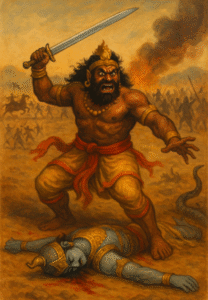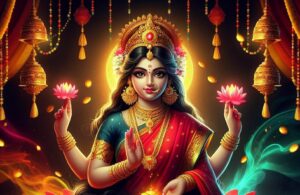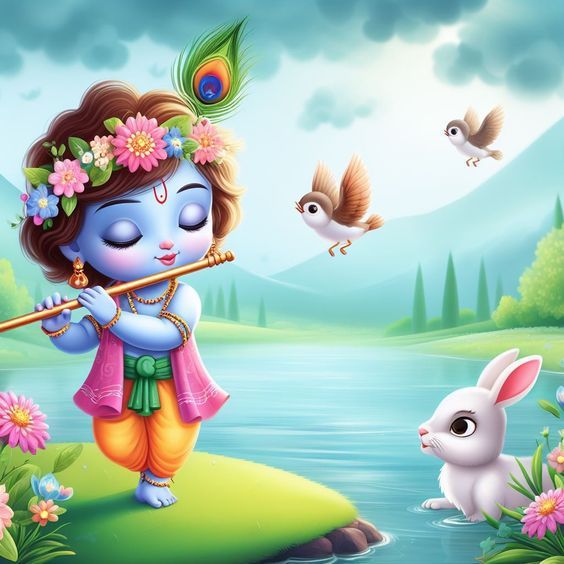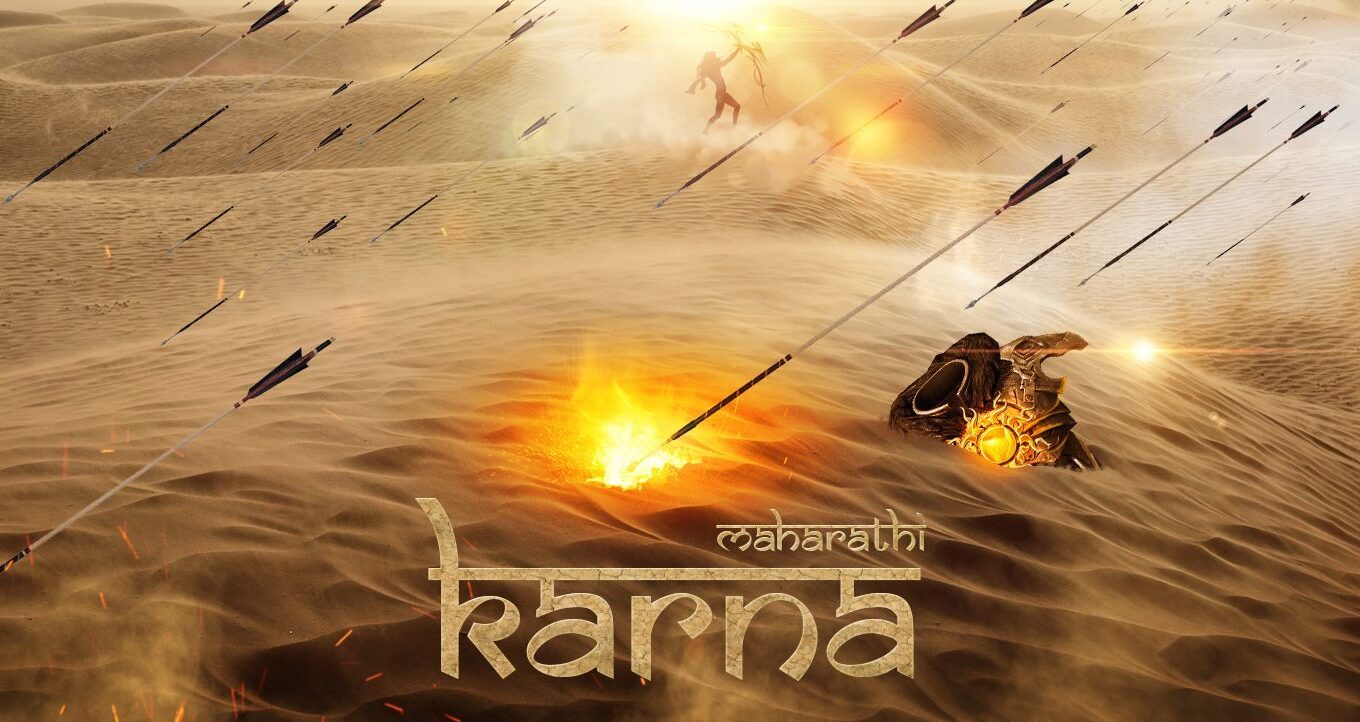Introduction
The beginning of Hindu New Year: Chaitra Vaishakhi marks a significant moment in the Hindu calendar, celebrated with joy and devotion across various regions in India. This festival not only symbolizes new beginnings but also brings families together to partake in age-old traditions and rituals. In 2025, this auspicious occasion falls on March 30.
The beginning of the Hindu New Year is rooted in ancient traditions and varies across regions in India. Primarily, it is celebrated on the first day of the month of Chaitra according to the Vikram Samvat calendar.
The Vikram Samvat is a historical Hindu calendar that dates back to 57 BCE, established by the legendary Indian king Vikramaditya of Ujjain. This calendar is significant in Indian culture and is primarily used in the Indian subcontinent and Nepal.
Origins of Vikram Samvat
According to popular folklore, King Vikramaditya defeated the Saka rulers who had invaded his kingdom. To commemorate this victory, he initiated the Vikram Samvat calendar, which symbolizes valor, justice, and wisdom. The calendar’s starting point marks a new era in Indian history, characterized by advancements in literature, science, arts, and culture.
Structure of the Vikram Samvat Calendar
The Vikram Samvat is a lunisolar calendar, meaning it incorporates both lunar and solar movements. Here are some key features:
- Months: The calendar consists of 12 lunar months, each beginning with the new moon or Amavasya. The months are as follows:
- Chaitra
- Vaisakha
- Jyaistha
- Asadha
- Sravana
- Bhadrapada
- Asvina
- Kartika
- Agrahayana (or Mangsir)
- Pausa
- Magha
- Phalguna
- Year Length: A typical year in the Vikram Samvat consists of 354 days, which is about 11 days shorter than the solar year of 365 days. To reconcile this difference, an extra month known as Adhik Maas is added approximately every three years.
Cultural Importance of Chaitra Vaishakhi
Chaitra Vaishakhi is celebrated as the first day of the lunar month Chaitra, marking the start of the Vikram Samvat 2082 year. It is believed to be the day when Lord Brahma created the universe, making it a time for spiritual renewal and reflection.
The Hindu New Year is celebrated as Chaitra Sukladi and marks a significant transition into the spring season. This day is known for its cultural and spiritual significance, symbolizing renewal and new beginnings. The festival has been observed for centuries and is associated with various rituals that reflect the vibrancy of life and nature.
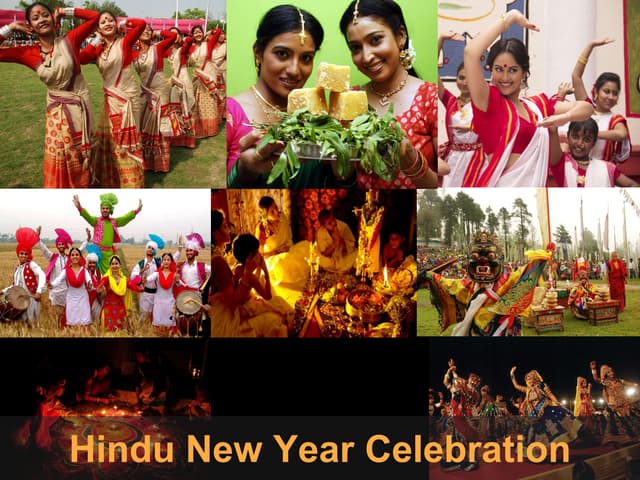
Regional Variations
The celebration of Chaitra Vaishakhi, marking the beginning of the Hindu New Year, varies significantly across different regions of India. Each region has its own unique customs, names, and rituals associated with this auspicious occasion. Here’s a detailed overview of how Chaitra Vaishakhi is celebrated in various parts of India:
1. Maharashtra – Gudi Padwa
In Maharashtra, the New Year is celebrated as Gudi Padwa. This festival involves:
- Hoisting the Gudi: A decorated pole (Gudi) is raised outside homes to symbolize victory and prosperity.
- Traditional Dishes: Families prepare special dishes like Puran Poli and Shrikhand.
- Rituals: People perform puja to seek blessings for the upcoming year.
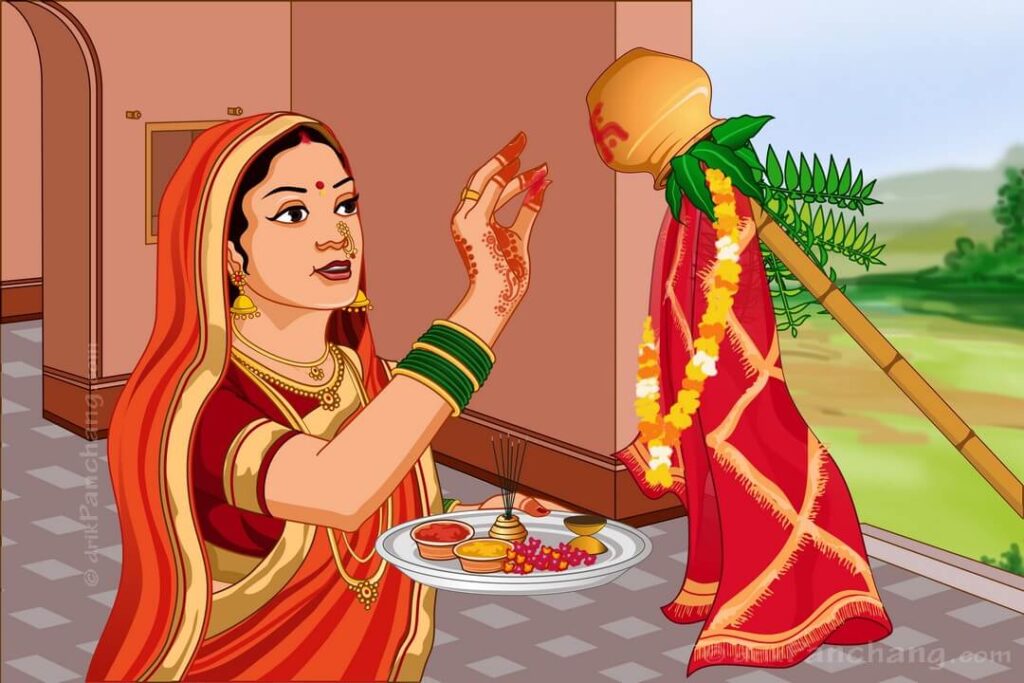
2. Karnataka and Andhra Pradesh – Ugadi
In Karnataka and Andhra Pradesh, the New Year is known as Ugadi. The celebrations include:
- New Clothes: People wear new clothes to mark the occasion.
- Special Foods: Traditional dishes like Bevu-Bella (a mix of jaggery and neem leaves) are prepared, symbolizing the sweetness and bitterness of life.
- Rituals: Families perform puja and decorate their homes with mango leaves.
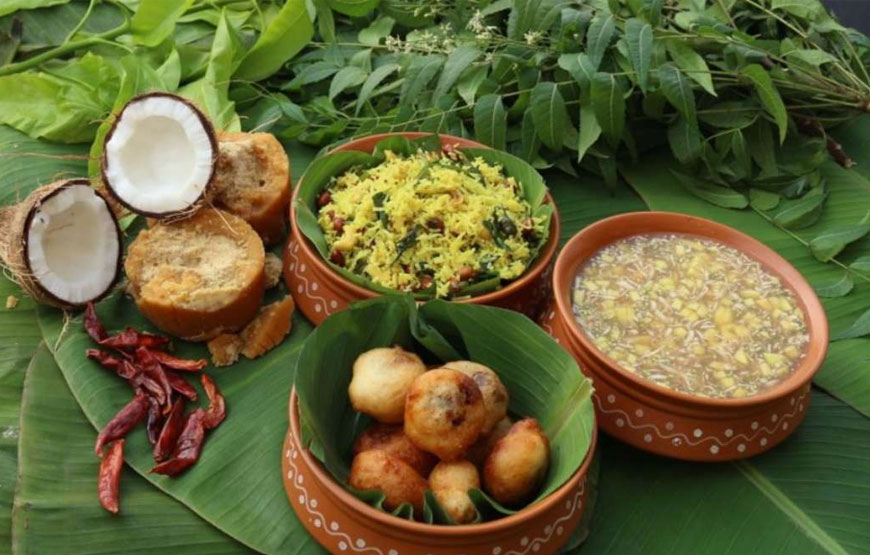
3. Punjab – Baisakhi
In Punjab, the New Year is celebrated as Baisakhi, which also marks the harvest festival. Key aspects include:
- Harvest Celebrations: Farmers celebrate the harvest of crops, especially wheat.
- Cultural Festivities: The day is filled with Bhangra and Gidda dance performances.
- Religious Significance: Sikhs commemorate the formation of the Khalsa in 1699.

4. West Bengal – Poila Baisakh
In West Bengal, the New Year is called Poila Baisakh. The festivities involve:
- Cultural Programs: People participate in cultural events and performances.
- Worshiping Deities: Offerings are made to Goddess Lakshmi for prosperity.
- Hal Khata: Businessmen start their new accounting year with Hal Khata (new account books).

5. Assam – Rongali Bihu
In Assam, the New Year is celebrated as Rongali Bihu, which coincides with the harvest season. Celebrations include:
- Seven-Day Festival: The festival lasts for seven days filled with feasting and traditional dances.
- Traditional Foods: Special rice cakes (Pitha) are prepared and enjoyed during this time.

6. Tamil Nadu – Puthandu
In Tamil Nadu, the New Year is known as Puthandu, celebrated with:
- Vishu Kani: Families prepare an auspicious tray filled with fruits and flowers to be seen first on New Year’s Day.
- Festive Foods: Traditional dishes like Mango Pachadi are prepared.
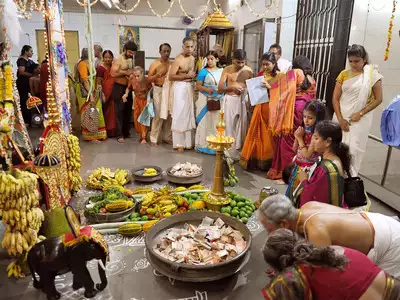
Chaitra Vaishakhi 2025 Date, Celebration, and Rituals
Chaitra Vaishakhi 2025 Date
- Date: March 30, 2025
- Time: The festivities typically begin at sunrise, with specific rituals commencing early in the morning.
Celebration
The celebration involves various customs that vary by region but generally include:
- Home Decoration: Families decorate their homes with colorful rangolis and fresh flowers to welcome prosperity.
- Rituals and Puja: Performing puja (worship) to deities, offering prayers for health and happiness.
- Feasting: Preparing traditional dishes and sharing them with family and friends fosters unity and joy.
Rituals
Common rituals performed during Chaitra Vaishakhi include:
- Holy Bath: Many devotees take a ritual bath in sacred rivers or at home to purify themselves.
- Offerings: Fruits, sweets, and special dishes are offered to deities during puja ceremonies.
- Charity: Engaging in acts of charity is considered auspicious during this time.
FAQ
Q: What is the significance of Chaitra Vaishakhi?
A: Chaitra Vaishakhi marks the beginning of the Hindu New Year and symbolizes new beginnings, spiritual growth, and cultural renewal.
Q: When is Chaitra Vaishakhi celebrated in 2025?
A: Chaitra Vaishakhi will be celebrated on March 30, 2025.
Q: What are common rituals associated with Chaitra Vaishakhi?
A: Common rituals include taking a holy bath, performing puja, decorating homes, and preparing traditional dishes for family gatherings.
Q: How is Chaitra Vaishakhi celebrated in different regions?
A: Different regions celebrate it as Gudi Padwa in Maharashtra, Ugadi in Karnataka, and Baisakhi in Punjab, each with unique customs and traditions.

